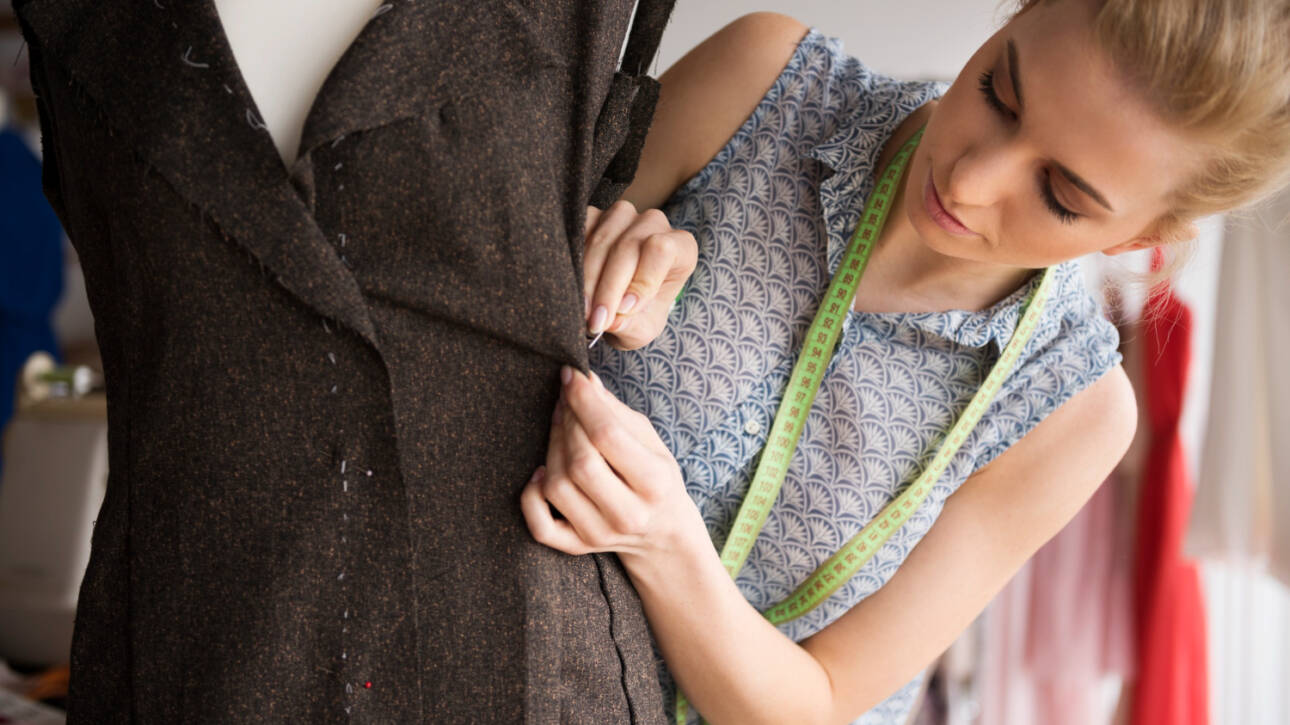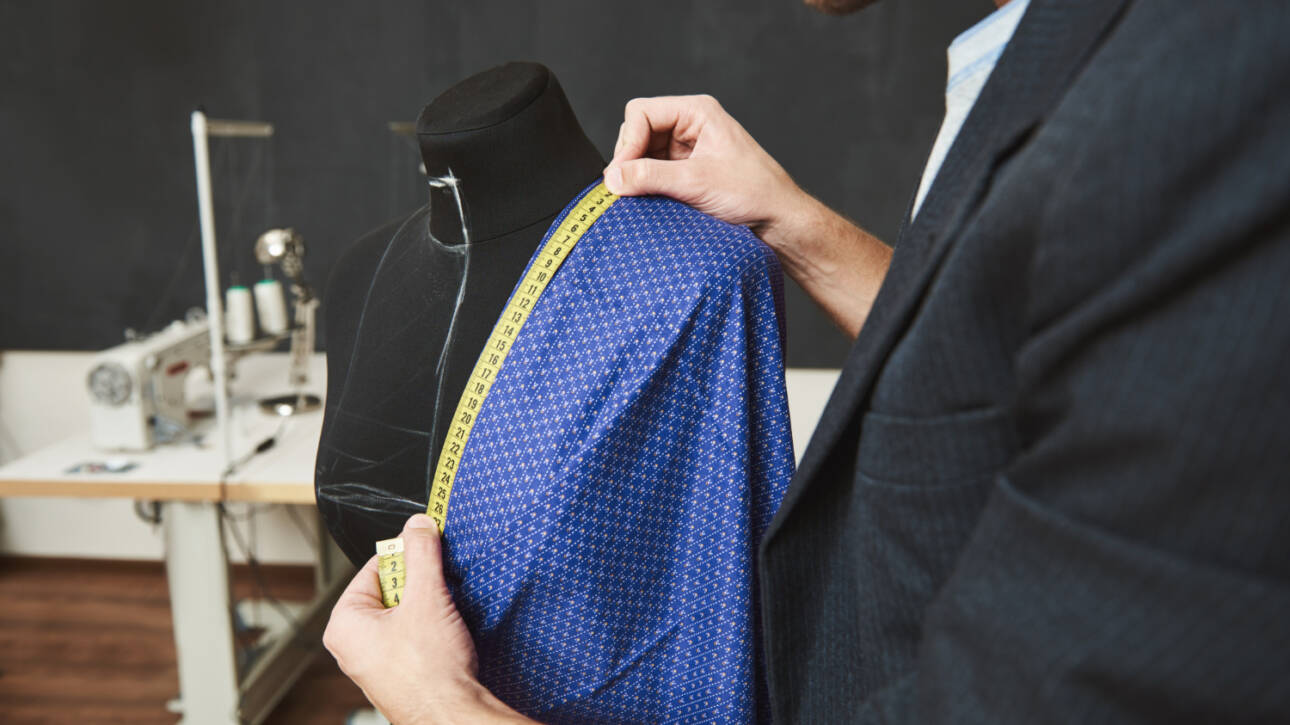BLAZER JACKET PRODUCTION
Blazer jacket production is a process where design, sewing and material quality are considered in detail. In order to produce a quality and useful blazer jacket, the following important points should be taken into consideration:
1. Fabric Selection
• Quality and Durability: It is important that the fabric is durable and long-lasting. Fabrics such as wool, cotton, polyester-viscose, velvet or linen are popular options for blazer.
• Seasonal Suitability: Light and breathable fabrics (such as linen) should be preferred for summer blazer, and thicker and warmer fabrics (such as wool) should be preferred for winter blazer.
• Wrinkle-proof: Fabrics that wrinkle less are a priority to maintain the shape of blazer jackets.
2. Pattern making, Design and Cut
• Body Type Suitability: The cut and mold should fit the body well and provide ease of movement. Different styles such as slim fit, oversize or classic cut can be offered.
• Shoulder Structure: The proper fit of the shoulders determines the quality of the blazer. Shoulder pads should generally be light and should not create an artificial look.
• Waist and Sleeve Cut: The waist of the blazer should fit the body properly, and the sleeves should be comfortable enough not to restrict movement.
3. Stitching Quality
• Clean and Strong Stitching: Stitches should be neat and durable. Threads that do not easily unravel or break should be preferred.
• Symmetrical Details: Symmetrical details such as pockets, buttons and collars complete the aesthetic appearance of the blazer.
• Inner Lining: Making the inner lining from quality fabric and sewing it properly ensures that the blazer looks aesthetic both inside and out.
4. Accessories and Details
• Button Selection: Buttons are a detail that completes the elegance of the blazer. Materials such as metal, mother-of-pearl and wood can be used.
• Pocket Design: Pockets that are functional and decorative should be compatible with the general design of the blazer.
• Seam and Piping: Seams should be hidden properly; piping should support the design.
5. Functionality
• Ease of Use: The blazer should be easy to put on and take off.
• Air Circulation: Breathability should be taken into consideration when choosing fabric and lining.
• Versatility: Designs that will adapt to both business and daily combinations should be produced.
6. Production Techniques
• Pressing and Ironing: Pressing the fabric properly after cutting ensures that the form of the blazer is preserved.
• Pattern Application: Correct application of design patterns ensures that the product looks high-quality and flawless.
• Special Sewing Techniques: Techniques used especially on lining, shoulders and collars support the longevity of the blazer.
7. Final Control and Inspection
• Product Quality: Every blazer that comes out of production should go through a detailed quality control process in terms of stitching, fabric and accessories.
Trial and Measurement Control: The consistency of measurements should be verified by trying on various sizes.
Paying attention to these points in blazer jacket production ensures that a product that is both aesthetic and functional is obtained. A quality blazer both increases consumer satisfaction and strengthens the reliability of the brand.

BLAZER JACKET COMBINATIONS
Blazer jackets are versatile pieces that can be used in both stylish and casual combinations. Here are the methods you can pay attention to when combining blazer jackets:
1. Classic and Stylish Combinations
• Office Style: You can combine it with a white shirt, black fabric pants and black leather shoes.
• Pencil Skirt: You can create a professional look by completing your blazer jacket with a classic pencil skirt.
• Combination with High Heels: You can achieve a sophisticated air by combining a plain-colored blazer with an elegant blouse and high heels.
2. Casual and Daily Combinations
• Jeans and T-Shirt: You can adapt the blazer jacket to a daily look with a basic white T-shirt, jeans and sneakers.
• Shorts Combination: In the summer months, you can create a fresh style by combining the blazer jacket with jean shorts and sandals.
• Oversize Blazer: You can achieve a comfortable style by combining the oversize blazer jacket with a crew neck T-shirt and loose trousers.
3. Monochrome Combinations
• You can achieve a modern look by choosing pieces in single color tones (e.g. beige, black, white). For example, you can use beige blazer with beige pants and nude high heels.
4. Using Patterned or Colorful Blazers
• Patterned Blazer: You can balance a patterned blazer jacket with a simple combination. For example, you can choose a patterned blazer over a solid-colored dress.
• Colorful Combinations: You can achieve an energetic look by combining a colorful blazer jacket with blouses and pants in complementary tones.
5. Accessory Selection
• Waist Accentuation with a Belt: You can emphasize your waist by using a thin belt on a blazer jacket.
• Bag and Shoes: For a more sophisticated look, you can choose leather bags and loafer-style shoes that match your blazer.
6. Blazer Dress
• For a bolder look, you can wear the blazer jacket as a dress and combine it with long boots.
To match the blazer jacket, it is enough to pay attention to the texture and color harmony of the pieces! You can try whichever style you feel close to.

HISTORY OF BLAZER JACKET
The blazer jacket is a piece of clothing that has become a symbol of both elegance and functionality in women’s fashion. When we look at the history of the blazer jacket in women’s clothing, we see the reflection of important social and cultural changes in the fashion world:
The Origins of the Blazer Jacket
• 19th Century: The blazer jacket was actually born as a part of men’s clothing. Designed for the sports teams of Cambridge University in England, blazers had a light, comfortable and classic look. It took its name from its “blazing red” colored versions.
First Use in Women’s Clothing: 1920s
• 1920s: While Coco Chanel revolutionized women’s clothing, she adapted blazer-style jackets to women’s fashion with a feminine touch. Blazers designed for men at that time turned into a more comfortable and functional form for women. Chanel’s tweed suits played a major role in women’s introduction to the blazer jacket.
This period was a period when women began to step into business life and a freer life. The blazer jacket provided women with a practical and stylish choice.
1940s and 1950s
• World War II (1940s): As women participated more in business life due to the war, the blazer jacket became popular as a work outfit worn in both factory and office environments. At that time, blazers had more masculine cuts.
• 1950s: In the post-war years, the blazer jacket was redesigned with more elegant and feminine cuts. The waist was emphasized and was combined with skirts.
1970s: Power Dressing
• As women began to gain more space in the business world, the blazer jacket became an important symbol of the “power dressing” trend.
• Yves Saint Laurent: He pioneered women to achieve a powerful yet stylish look by bringing the blazer and trouser combination to women’s fashion with his iconic “Le Smoking” suit.
1980s: Shoulder Pads and Masculine Style
• The 1980s were a period when the masculine lines of women’s blazer jackets reached their peak. While shoulder pads emphasized power and authority, blazers were generally used with a wide cut and long design.
During this period, blazers were an indispensable part of office style and became a symbol of power symbolizing the presence of women in the male-dominated business world.
1990s and 2000s: Minimalism
• 1990s: Blazer jackets came to the fore with simpler and more minimalist designs. Monochrome colors and slim cuts came to the fore.
2000s: Blazer jackets were reinterpreted as a versatile piece that could be used both in the business world and in everyday life.
Today
• Today, the blazer jacket is an indispensable part of women’s fashion with both classic and modern interpretations. Varieties such as oversize cuts, colorful patterns, crop blazers and blazer dresses allow the blazer jacket to appeal to every style.
The blazer jacket has been shaped in parallel with the role of women in social life from past to present and has become a timeless style element.



